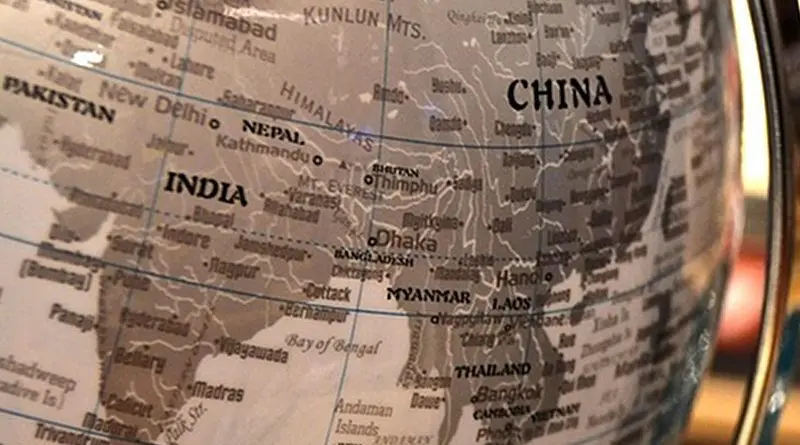South Asia Geopolitical Dynamics Of China-Pakistan And US-India Power Plays – Analysis
South Asia geopolitical dynamics in 2023 can be said to have spun on its head noting that the global geopolitical fault lines marked by the intensifying rivalry of China with the United States finds reflection in the Indian Subcontinent wherein the ongoing power-play of the United States-India Strategic Partnership against the China-Pakistan Axis is unfolding with uncertain results for China.
While the US-India Strategic Partnership shows no signs of weakening, having acquired ‘Global’ contours transcending the South Asian confines, the China-Pakistan Axis could end up ‘frayed’ resulting from Pakistanis growing disenchantment with China and that country’s virtual indifference to Pakistan’s economic and political meltdown. Sensing Pakistan’s predicament, the United States seems to be making opening political outreaches to Pakistan to wean it away from China’s virtual colonialistic strategic hold.
Before one analyses the prospects of the US-India and China-Pakistan Axis power-play in South Asia it would be pertinent to provide the pre-2023 context that prevailed in the Subcontinental Region, which abuts both Middle East and South East Asia-regions in which the United States and China have vital stakes.
South Asia geopolitical dynamics from 1991 to 2015 was broadly characterised by the United States and China having policy convergences on the strategic utility of Pakistan for their respective national security interests, despite the fact that the United States had already laid the foundations of the US-India Strategic Partnership, which in 2023 has evolved into a ‘Comprehensive and ‘Special’ US-India Global Strategic Partnership.
In 2023, the comparative overview of China-Pakistan Axis, long-standing since 1963, and the US-India Global Strategic Partnership throws up the widely contrasting spectacle of Pakistan in an economic and political meltdown with the United States de-linking Pakistan from its strategic primacy in US South Asia policy calculus disillusioned by Pakistan’s “Double Timing” and undermining US national security interests in Afghanistan.
In 2023, India despite some roller-coaster rides in United States policies towards India in the first decade of the 21st Century has zoomed comprehensively in all domains—- geopolitical, strategic, military, and economic. So much so, that in 2023, India is termed by United States as a ‘pivotal partner’ in Indo Pacific Security template.
The United States and India in 2023 can be seen in close geopolitical and strategic cooperation, not only in South Asia but also in the Middle East and South East Asia/Indo Pacific as evident from India being a part of US-led QUAD Security Initiative and I2U2 Security Initiative in the Middle East comprising India, Israel, USA, and UAE.
Notably, the United States has recognised India as a vital US Partner with long term perspectives, and which perspectives are likely to get further reinforced as China increasingly displays propensities to dive into a head-long military confrontation with United States. So, it would be fair to analytically assert that in terms of policy planning perspectives of both United States and India, the US-India Combine based on evolving ‘Strategic Convergences’ and ‘Strategic Trust’ can be assessed as being endowed with longevity.
Notably again, the United States after enlisting Pakistan in the 1950s and1960s in its security treaties like MEDO and SEATO has thereafter not deemed it fit to include Pakistan in its any of the US-led Security Initiatives that exist in 2023, and of which India is a part. A reality-check of US-Pak relations would highlight that thereafter United States strategic formulations on Pakistan tended to be “transactional” in nature and intent. This can be traced to Pakistan’s propensity to play the ‘China Card’ promiscuously and United States “Strategic Distrust; so accruing.
The point to note in 2023 is that while the United States may in its perspectives might have some place for strategic utility of Pakistan in the Iran and Afghanistan contexts, but in terms of US long-term strategic perspectives, India in 2023 far outweighs Pakistan in terms of geopolitical weightage and ‘Major Power potential.
Concluding, in terms of ‘predictive assessment’ it would be safe to assert that the unfolding geopolitical template suggests that in terms of South Asia, or the Indian Subcontinent to be more accurate, it would be fair to foresee that in any future US-India and China-Pakistan power-play, India would far outweigh Pakistan, not only in United States policy perspectives, but also in China’s perspectives. Visible already is China’s extreme ‘strategic discomfiture’ of India’s growing Global Strategic Partnership with the United States, and for which Pakistan will be a less and lesser Chinese ‘foil’ to keep India confined in South Asia which was China’s underlying strategy since 1963.

